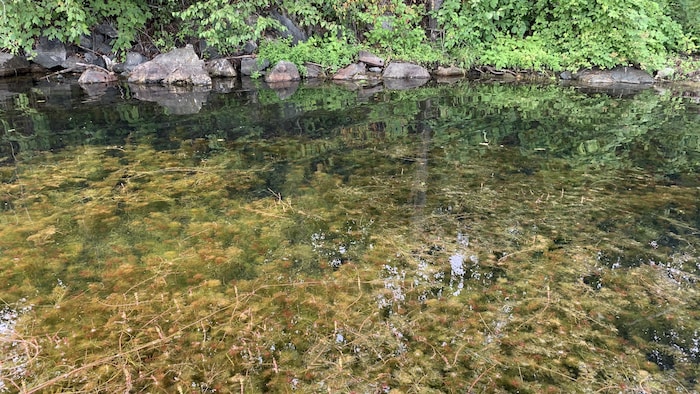Open full screen Eurasian watermilfoil can grow to a point where it floats to the surface in a waterhole. Radio-Canada Speech synthesis, based on artificial intelligence, makes it possible to generate spoken text from written text. Ontario adds several new invasive species to its list of restrictions and prohibitions, in an attempt to prevent their presence in our ecosystems. The new additions to the list of Invasive species bans include fish, aquatic plants, a rodent, a shrimp and a terrestrial plant.
The killer shrimp attacks the eggs, larvae and hatchlings of smaller fish, impacting the food chain.
According to Derissa Vincentini, community science coordinator at the Sault Ste. Marie Invasive Species Center, the ban list aims to prevent the entry into the ecosystem of species that are not yet there.
Vincentini says preventing new invasive species from entering ecosystems is the most cost-effective way to keep them in good condition.
It is cheaper and more effective to start with prevention rather than waiting until the species is there. It is therefore very important to limit the possibility of selling, exchanging, moving and cultivating these species in Ontario, she explains.
Loading
Ministerial exams scheduled for January in Quebec are postponed
ELSIDE ON INFO: Ministerial exams scheduled for January in Quebec are postponed
Also, five species have been added to the restricted list, meaning they may already be present in Ontario, but are not very widespread .
The species that have been added to the list of invasive species have the particularity of being able to spread easily within ecosystems.
Derissa Vincentini cites the example of Eurasian watermilfoil, which is not yet found everywhere in the lakes of Northern Ontario, but which can spread very quickly.
Eurasian milfoil plants
If the plant is simply torn off or cut by your boat's propeller, the pieces of the plant may then move to another location in the lake or into a downstream waterway, or even become attached to your boat and moved to another lake, she says.
These fragments can then create a new plant on their own, she adds. -she.
The province said Eurasian milfoil is being added to the list because it has the potential to outcompete native vegetation, harm water quality, interfere with recreational activities and create a habitat for mosquitoes.
Silver crucian carp reproduce by gynogenesis, that is, sperm from other fish species are used to activate egg development, producing cloned offspring, genetically identical to the mother.
The American red fin is also one of the species that worries the conservation community.
If the small fish has not yet been found in Ontario, Jenna White, program development coordinator at the Center for Invasive Species, says environments like the Great Lakes are not immune.
Its known and introduced range includes states such as Arizona, Utah, New Mexico, Wyoming, North Carolina, Alabama, North Dakota and Colorado, White says.
The Great Lakes region is always concerned about species of this type because they have the ability to move, she adds. -elle.
Jenna White is concerned that the American redfin may be showing up in the Great Lakes since some use it as bait.
The American redfin outcompetes native species in terms of reproduction and, although it has natural predators, it does not ;is not worried because of its high reproductive capacity.
Ms. Vincentini says it is important that Ontarians learn to identify the species invasive species and how they spread, and take steps to avoid unwitting participation in the invasion.
With information from CBC.

